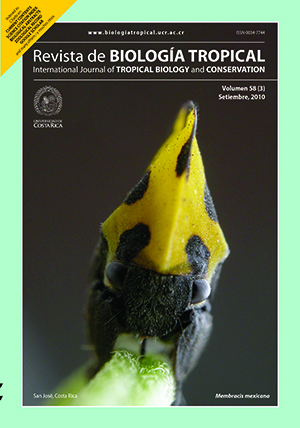Abstract
The shrimp fishery in the Gulf of California is one the most important activities of revenue and employment for communi-ties. Nevertheless, this fishery has also created a large bycatch problem, principally fish. To asses this issue, a group of observers were placed on board the industrial shrimp fleet and evaluated the Eastern side of the Gulf during 2004 and 2005. Studies consisted on 20kg samples of the capture for each trawl, and made possible a sys-tematic list of species for this geographic area. Fish represented 70% of the capture. A total of 51 101 fish were collected, belonging to two classes, 20 orders, 65 families, 127 genera, and 241 species. The order Perciformes was the most diverse with 31 families, 78 genera, and 158 species. The best represented families by number of species were: Sciaenidae (34) and Paralichthyidae (18) and Haemulidae and Carangidae (16 each). The best represented genera in number of species were Symphurus (nine) and Diplectrum and Cynoscion (six); other important genera were Larimus and Porichthys with five species each. The best represented species in number were Syacium ovale, Pseudupeneus grandisquamis, Haemulopsis nitidos, Diplectrum pacificum,Synodus sci-tuliceps, Balistes polylepis, Eucinostomus currani, Eucinostomus gracilis,Porichthys analis, Chloroscombrus orqueta, Selene peruviana, Orthopristis reddingi, Etropus crossotus, Scorpaena sonorae and Urobatis halleri. The number of recorded species is notably high, compared with demersal fauna of other areas of the Mexican Pacific, such as Gulf of Tehuantepec (178), Nayarit, Michoacán, Guerrero (174, 120 and 166), Jalisco and Colima (161 species), and those of the Western coast of the Baja California Peninsula (220 species).
##plugins.facebook.comentarios##

This work is licensed under a Creative Commons Attribution 4.0 International License.
Copyright (c) 2010 Revista de Biología Tropical






